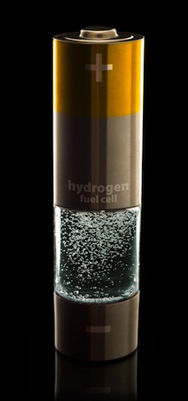Batteries and Fuel Cells
The improved storage capacity of primary and secondary batteries is advancing their use in a great variety of technical applications. With the approaching shift from fossil to renewable energy sources, batteries and fuel cells will become ever more important. Natural graphite is an important raw material in these products.
In various battery systems such as Al-Mn, Ni-Cd, or Zn-C cells, graphite is used as a conductivity additive. In such cases the purity requirements for graphite may be as high as 99.99%, and such levels of purity can only be achieved by special purification processes.
In Li-ion or Li-polymer batteries, graphite plays an active role as the anode material into which Li ions are intercalated. This process is possible because of the layered crystal structure and high surface area of graphite. It is currently estimated that a standard EV vehicle will contain as much as 38kg of graphite. As EVs grow current worldwide graphite production is expected to increase by upwards of 500,000 tonnes per year. The price of a barrel of oil consistently above $150 would likely be the immediate catalyst for such a paradigm shift.

Fuel Cells
In PEM fuel cells, graphite plays an important role as the preferred raw material for bipolar plates. Natural graphite offers unique properties as listed below:
- high electrical conductivity
- chemical inertness
- extremely low permeation coefficient
- mechanical stability
- a favorable price
| Battery Specs | Finished Grade | Mesh Size | Surface Area |
|---|---|---|---|
| Alkaline | 90-99.9% C | -150 + 250 | |
| Lead Acid | 90-95% C | -250 +300 | |
| Lithium Ion | 99-99.9% C | -300 +500 | 3-13 m2/gram |
| Spherical Graphite | 99.9%C | 10 _m - 50 _m | 3.7 - 5.4 m2/gram |
| Fuel Cells | 99.9% C | -100 +350 | 1.5 - 6.5 m2/gram |
